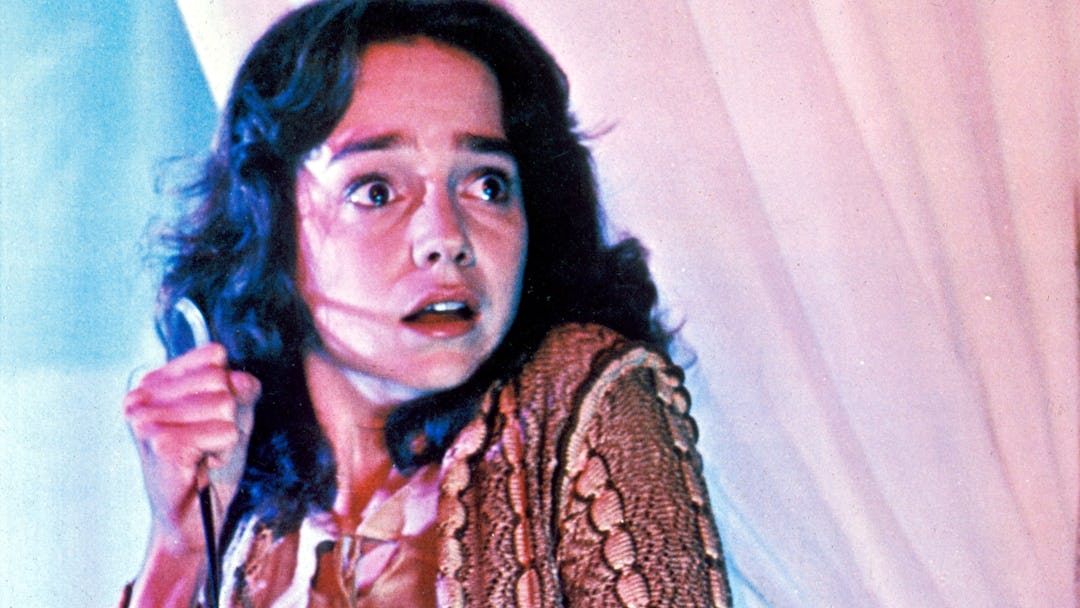Perhaps more than any other film genre, horror is a construct in which music and sound play a crucial role in the way that we identify with character. Indeed some films — such as Robert Wise’s chilly classic The Haunting — primarily elicit scares from their masterfully subjective acoustics, the film’s spectral antagonist unseen. An effective score can enhance a dire film, while other soundtracks have terrified us in such a primal way that their sounds have ineffably scarred our unconscious — and perverted our bathroom habits (see: Psycho ). Yet, amongst the creeping terror of these melodies are soundtracks that have haunted us with their beauty, acting as disarming counterpoints to on-screen anomie. Sometimes, it’s not a minor-chord lunge or a synth-shriek that renders the malevolent world of make-believe uncannily palpable. Here are ten beguiling favorites. What are yours?
Nosferatu the Vampyre / Popol Vuh
Longtime Herzog collaborators Popol Vuh teamed up with the German director for his 1979 remake of the silent horror film classic. It’s an unlikely mix of ethereal, exotic and hypnotic Heathen sounds, plus the band’s signature Moog-tastic style that sets a completely different tone for the famous vampire tale. If you ever wanted to imagine Dracula with a side of tabla drums and sitar, this is it.
The Wicker Man / Paul Giovanni and Magnet
Smartly subversive and featuring one of the most haunting endings to a film ever, Robin Hardy’s The Wicker Man (1973 — let’s forget the Cage version ever happened) tells the tale of a pagan cult off the coast of Scotland. Life’s pretty great on Summerisle. When the island’s residents aren’t engaging in orgies, they’re singing rounds of pervy folk songs. The film’s soundtrack — like the movie — is deceptively jovial, which makes the conclusion all the more devastating. “Willow’s Song” is perhaps the most popular track from the film, thanks to a naked and prancing Britt Ekland. It’s an earthy, sensual siren song about the temptation of feminine wiles — one of the things the movie’s moralistic protagonist grapples with once he arrives at the bizarre oasis.
Suspiria / Goblin
Witchiness abounds in Goblin’s soundtrack for Dario Argento’s Italian horror favorite, Suspiria. The prog band has worked on a variety of essential soundtracks. While their collaboration for Romero’s Dawn of the Dead is tonally more varied, and Deep Red’s OST has funkier, livelier notes, it’s their haunting score for Suspiria that’s most unforgettable. An immersive, intricate, dark weave of experimental sounds and ghostly vocals, Suspiria is strikingly beautiful.
Candyman / Phillip Glass
Phillip Glass and a slasher film? Seems odd, but it worked perfectly for 1992’s Candyman — a re-telling of Clive Barker’s short story, The Forbidden. The concept also seemed strange for the famous composer who thought director Bernard Rose’s film didn’t match the integrity of his gorgeous, gothic score. The prolific musician even refused consent for the release of his soundtrack until 2001. Thankfully he gave in, because the soulful music seems tailor-made for this underrated horror gem.
The Strange Vice of Mrs. Wardh / Nora Orlandi
Giallo cinema darlings Edwige Fenech and Ivan Rassimov are one of the Italian subgenre’s most enigmatic couples to watch on screen. It seems only fair that the score for their darkly sexy The Strange Vice of Mrs. Wardh is equally provocative. Nora Orlandi was one of the few Italian female composers of her time — which is ironic, but refreshing considering giallo’s penchant for nude bodies and violence towards women — and her soundtrack for the seductive film is essential to its appeal. (Quentin Tarantino used Orlandi’s “Dies Irae” in Kill Bill Vol. 2.)
Near Dark / Tangerine Dream
If you don’t love at least one Tangerine Dream film score, then there’s something inherently wrong with you. From Legend to Firestarter, the electronic band’s innovative compositions have dotted the cinesphere with their moody synthscapes. The hazy, melancholic sounds they created for Kathryn Bigelow’s grossly underrated Near Dark complemented the narrative about a man who struggles with embracing his vampiric lifestyle, and fights not to become like the wild bunch that adopt him into their unruly clan.
Hellraiser / Coil
Horror scribe Clive Barker commissioned the avant-experimental band Coil to create a soundtrack for the film version of his novella, The Hellbound Heart. The band’s composition for 1987’s Hellraiser didn’t pass Barker’s muster — he likened it to an intestinal malady — and Christopher Young’s more commercially acceptable traditional orchestration was used instead. (Coil’s soundtrack was later issued as a standalone release.) While Young’s version is enjoyable, Coil’s interpretation of the twisted tale — about sadistic demons from hell that tempt with carnal pleasures — slowly builds in dense layers to create a chilling, atmospheric sound.
Rosemary’s Baby / Krzysztof Komeda
Roman Polanski’s queasy satanic horror fave, Rosemary’s Baby, featured the voice of star Mia Farrow in its main theme song — a creepy lullaby composed by Polish musician Krzysztof Komeda — making this soundtrack a sinister classic.
A Lizard in a Woman’s Skin / Ennio Morricone
Italian maestro Ennio Morricone has composed some of the most memorable cinematic scores in film history — including the famous theme for Sergio Leone’s spaghetti western classic, The Good, the Bad and the Ugly. Blending dissonant jazz and breathy female vocals for Lucio Fulci’s A Lizard in a Woman’s Skin, Morricone’s soundtrack signals the dreamy terror of Fulci’s psychedelic nightmare.
Bram Stoker’s Dracula / Anton Coppola
Francis Ford Coppola’s uncle, Anton, conducted the soundtrack for his 1992 re-telling of Bram Stoker’s classic novel, Dracula. While the OST features familiar dark orchestrations, tracks from the Eurythmics’s Annie Lennox and vocal alchemist Diamanda Galás break up the fanfare a bit, while still keeping with the vibe of Coppola’s over-the-top production.
